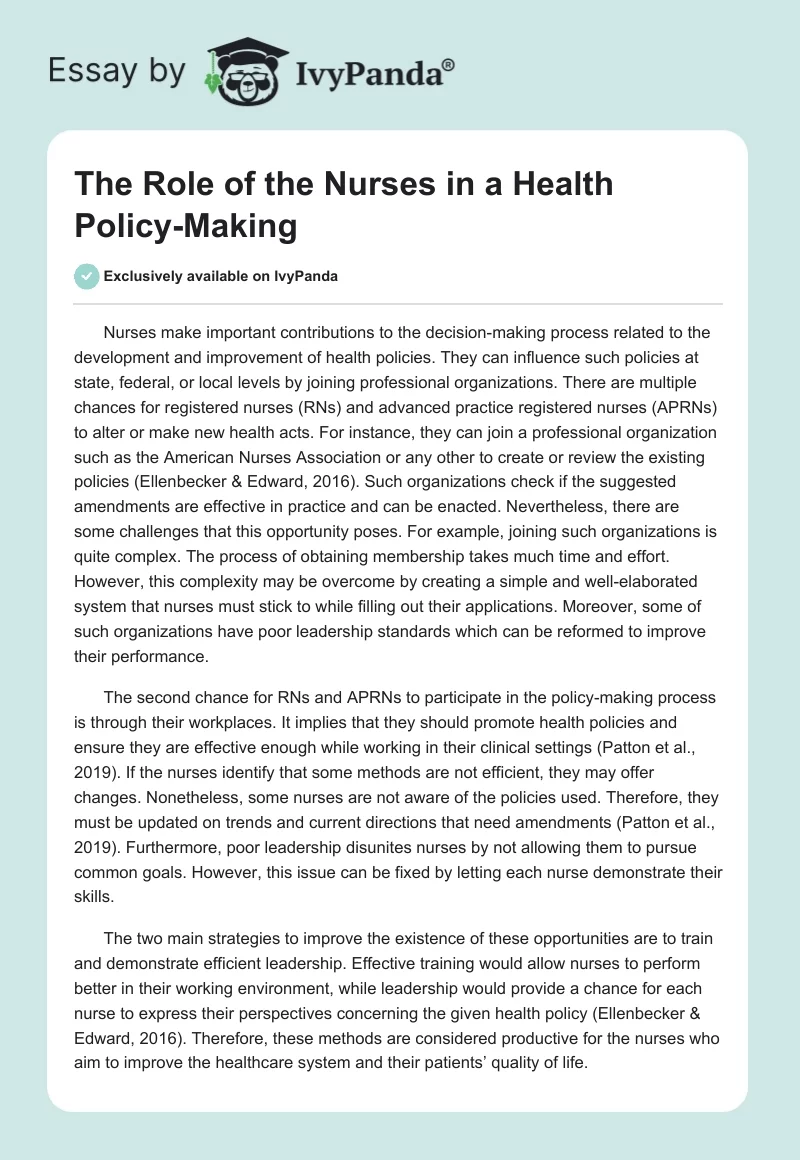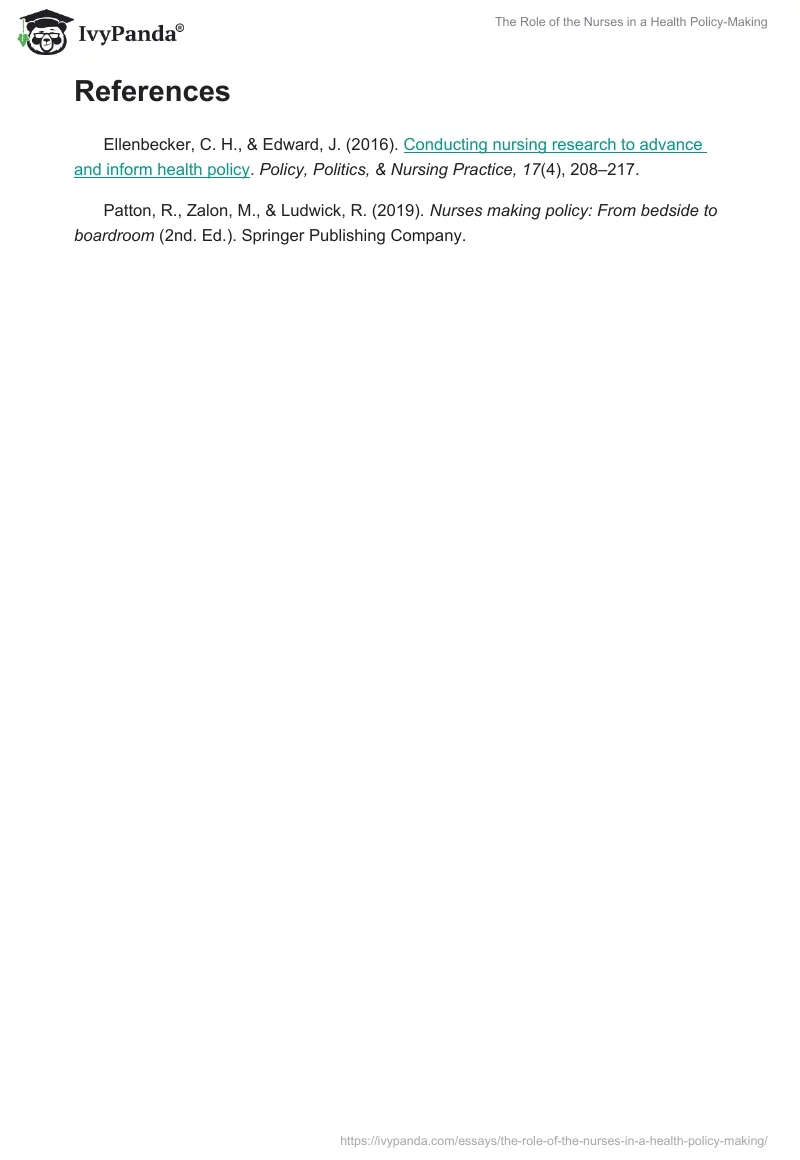Nurses make important contributions to the decision-making process related to the development and improvement of health policies. They can influence such policies at state, federal, or local levels by joining professional organizations. There are multiple chances for registered nurses (RNs) and advanced practice registered nurses (APRNs) to alter or make new health acts. For instance, they can join a professional organization such as the American Nurses Association or any other to create or review the existing policies (Ellenbecker & Edward, 2016). Such organizations check if the suggested amendments are effective in practice and can be enacted. Nevertheless, there are some challenges that this opportunity poses. For example, joining such organizations is quite complex. The process of obtaining membership takes much time and effort. However, this complexity may be overcome by creating a simple and well-elaborated system that nurses must stick to while filling out their applications. Moreover, some of such organizations have poor leadership standards which can be reformed to improve their performance.
The second chance for RNs and APRNs to participate in the policy-making process is through their workplaces. It implies that they should promote health policies and ensure they are effective enough while working in their clinical settings (Patton et al., 2019). If the nurses identify that some methods are not efficient, they may offer changes. Nonetheless, some nurses are not aware of the policies used. Therefore, they must be updated on trends and current directions that need amendments (Patton et al., 2019). Furthermore, poor leadership disunites nurses by not allowing them to pursue common goals. However, this issue can be fixed by letting each nurse demonstrate their skills.
The two main strategies to improve the existence of these opportunities are to train and demonstrate efficient leadership. Effective training would allow nurses to perform better in their working environment, while leadership would provide a chance for each nurse to express their perspectives concerning the given health policy (Ellenbecker & Edward, 2016). Therefore, these methods are considered productive for the nurses who aim to improve the healthcare system and their patients’ quality of life.
References
Ellenbecker, C. H., & Edward, J. (2016). Conducting nursing research to advance and inform health policy. Policy, Politics, & Nursing Practice, 17(4), 208–217.
Patton, R., Zalon, M., & Ludwick, R. (2019). Nurses making policy: From bedside to boardroom (2nd. Ed.). Springer Publishing Company.


